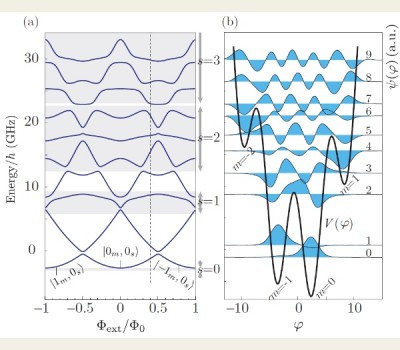In charge-coupled circuit QED systems, transition amplitudes and dispersive shifts are governed by the matrix elements of the charge operator. For the fluxonium circuit, these matrix elements are not limited to nearest-neighbor energy levels and are conveniently tunable by magnetic flux. Previously, their values were largely obtained numerically. Here, we present analytical expressions for the […]
Author: cyl460
Physical Review X paper on Fluxonium Symmetries published
Quantum circuits present a powerful framework for achieving new functionality by combining circuit elements into larger networks. However achieving quantitative modeling of large quantum circuits such as fluxonium, is hampered by non-linearity, interactions and a large number of degrees of freedom. In our paper we make use of approximate Unitary and Symmetric group symmetries to […]
New Phys. Rev. B article on Fluxonium Qubits in the Dispersive Regime
In circuit QED, protocols for quantum gates and readout of superconducting qubits often rely on the dispersive regime, reached when the qubit-photon detuning $Delta$ is large compared to their mutual coupling strength. For qubits including the Cooper-pair box and transmon, selection rules dramatically restrict the contributions to dispersive level shifts $chi$. By contrast, without […]
New Nature Physics Progress Article on Quantum Simulation
Check out the latest review article on “On-chip quantum simulation with superconducting circuits” in the April edition of Nature Physics. Link: Nature Physics paper.
